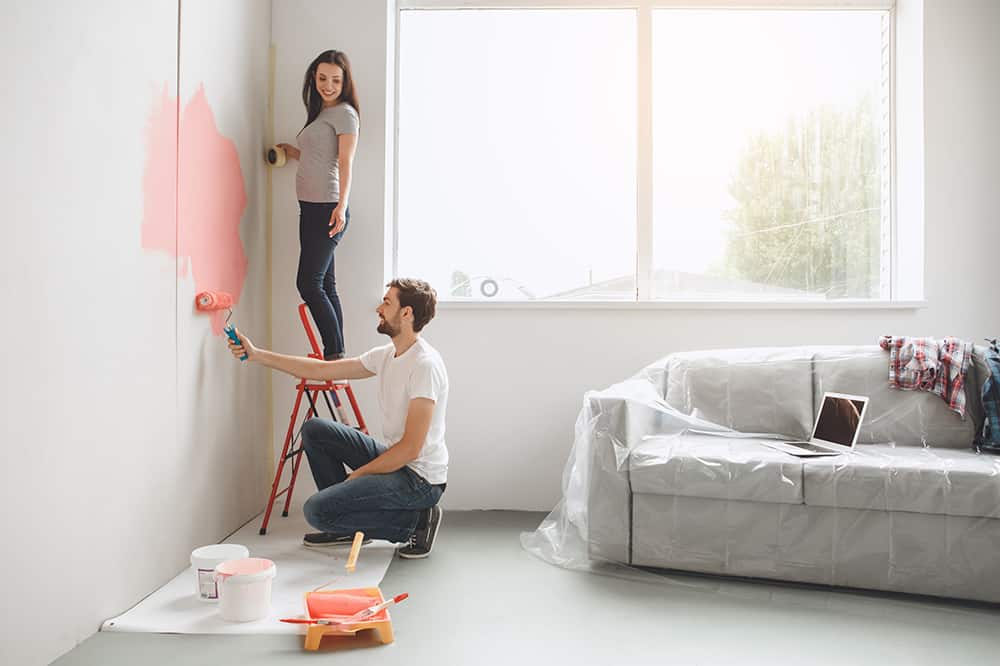Home improvement is a time-honoured way to spend your free weekends. And whether you’ve just taken proud possession of your first house or you’re renovating the old family home to sell, there’s doubtless plenty to be done.
Employing your DIY skills can save you serious coin, not to mention offer the satisfaction of a job well done. But should some jobs be left to the professionals? And how will you know which tasks to undertake? In some cases, especially if it’s a gas or electrical job, there is legislation governing which things you can and cannot do yourself. In others, it’s a matter of understanding what the task really involves.
We look at some of the most common tasks around the house and whether or not they’re DIY suitable.
1. Painting and plastering
DIY if the job is simple and you’re going to repaint the whole room.
Most people can fill in small holes where hooks have been removed, for example. Just fill, wait for them to dry and sand back to a smooth surface. Repainting the entire area is also a straightforward job, although you should always be careful to work in ventilated spaces to avoid fumes. This assumes that you’re not trying to match an unknown colour, and instead are either happy with colour differences between rooms or you know the exact colour of adjoining walls.
Call in the professionals if the work is more substantial or involves colour matching.
Plugging larger holes in a wall can turn into a bigger job than anticipated. You might encounter substantial crumbling or dry rot which require professional patching. It’s important, too, that the walls are patched with an appropriate material otherwise you’ll end up having to redo the work anyway.
Colour matching is another specialist skill. If you are trying to paint an area in an open plan space and don’t know the name of the colour the previous owners use, it’s a great idea to get a professional in. They’ll be able to come up with a blend that matches the rest of the house and is suitable for the room in question.
2. Plumbing
DIY if it’s a simple repair job like replacing a washer or clearing a blocked sink drain. Much of the hardware needed is easily available at hardware stores, so if you have some basic knowhow it’s very possible to go ahead and do it yourself.
Call in the professionals if the repair is more substantial or involves a braided hose. These latter are the flexible pipes found under kitchen sinks and a common cause of domestic flooding. If you notice rust, kinking or unravelling of the hose, don’t try and fix it yourself but call a licensed plumber. The wire is extremely sharp when unravelled, and damage to the pipe can cause serious flooding problems.
3. Gas and electricity
DIY if you’re replacing an old fan with a similar new one that doesn’t include a light fitting, changing light bulbs or smoke detector batteries, testing safety switches or replacing a fuse. You may also connect and disconnect gas cylinders and portable equipment like patio heaters.
Call in the professionals if it’s anything else. That includes all electrical appliances and wiring, including damage to wiring insulation, socket outlets or appliance cords. All gas work including flues and ducts, pipe work from the gas meter or cylinder, and gas appliances should be done by a licensed tradesperson.
Electrical and gas fitting work is heavily regulated, and undertaking these tasks without a licensed tradesperson means you risk a fine or even prosecution. Your tradesperson should issue you with a certificate of compliance after every job.
For peace of mind and the knowledge of a job well done, ask around for recommendations of trusted tradespeople and keep their names at hand. In the end, a job well done is the cheapest approach there is.
